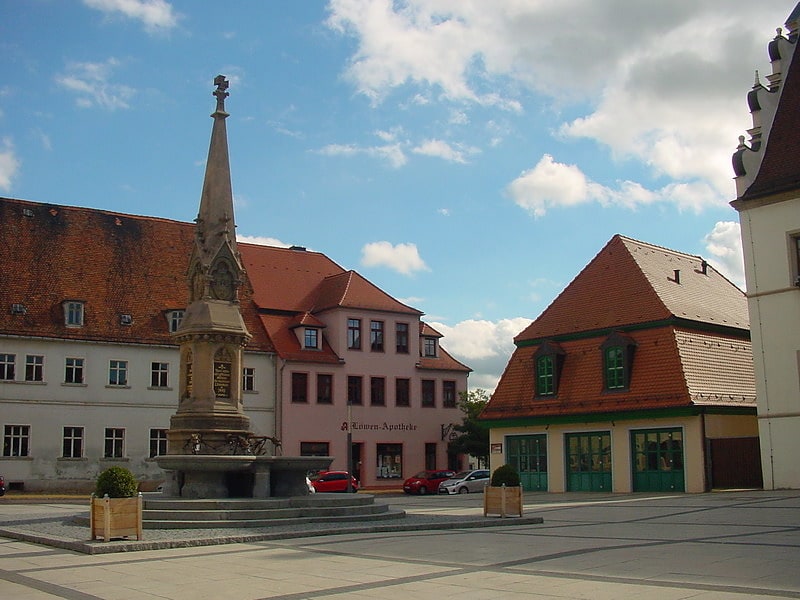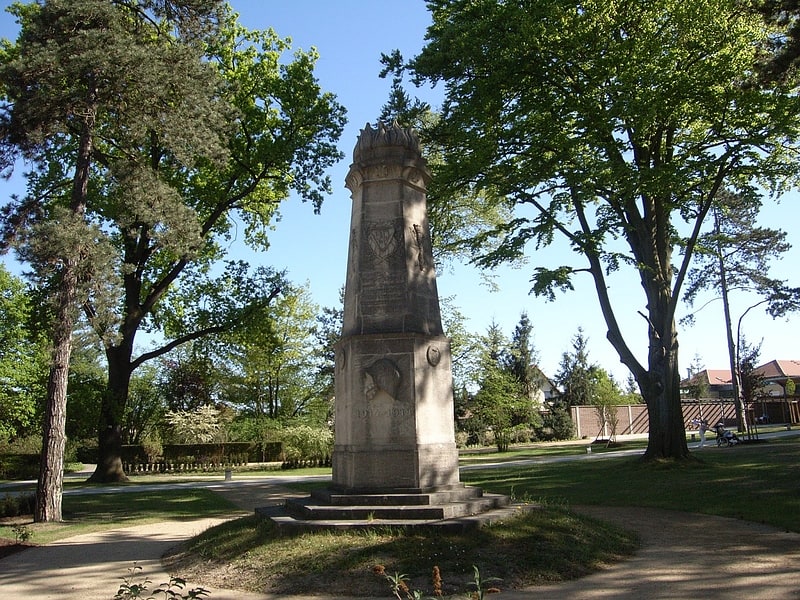Discover 5 hidden attractions, cool sights, and unusual things to do in Bad Schmiedeberg (Germany). Don't miss out on these must-see attractions: Düben Heath, Düben Heath Nature Park, and Autor. Also, be sure to include Denkmal für die Gefallenen des Kriegs von 1870 in your itinerary.
Below, you can find the list of the most amazing places you should visit in Bad Schmiedeberg (Saxony-Anhalt).
Table of Contents
Düben Heath

The Düben Heath is a landscape in Germany in eastern Saxony-Anhalt and northern Saxony, between the rivers Elbe and the Mulde, on the northern edge of the Leipzig Bay.
It is bounded in the west by the town of Dessau, in the north by the Elbe valley (Wittenberg, Pretzsch), in the southeast by Torgau, in the south by Eilenburg and the course of the Mulde through Bad Düben and Bitterfeld.
The Düben Heath is a terminal moraine landscape formed during the Saale glaciation (Plateau of Gräfenhainichen-Schmiedeberg) with predominantly sandy soils. Beneath this Pleistocene cover lie lignite-bearing strata. The majority of the Düben Heath is covered by forest.
The eastern part of the Düben Heath, with the resort of Bad Düben, is designated as a nature park. In the western part around Gräfenhainichen and Bitterfeld, lignite was extracted until the end of the 1980s in open pits; as a result large areas of the natural woodland landscape were destroyed. Since then, the pits have been remediated and the hollows with water. In the vicinity of Gräfenhainichen on a peninsula in the flooded Ferropolis open pit a museum of technology has been established, where open pit mining equipment and railway vehicles are displayed.
The dialects spoken in the Düben Heath in former times were as different as the landscape of the heath is varied. These dialects are sub-groups of the Upper Saxon German dialect, which is one of the central German languages. The development of these dialects was a result of several settlement phases, shaped by the borders of different domains and foreign influences.
With the settlement of displaced persons from the former eastern territories of Germany in the late 1940s, the migration of labour, the influence of literature, press, radio and television, the dialects of the Düben Heath are now hardly spoken.[1]
Düben Heath Nature Park

Also known as: Naturpark Dübener Heide
Park. The Düben Heath Nature Park, which covers large areas of the eponymous Düben Heath, was the first nature park in Germany that resulted from a citizen's initiative and not from a government office. Around 1990, in order to prevent the further spreading and advancement of brown coal mining in the neighbourhood, the first citizens' initiatives were established for the protection and conservation of nature in the area.
The park is covered by a very varied, rolling heathland formed as a result of the Saale glaciation. It is a traditional excursion and recreation area in the relatively sparsely wooded heart of Central Germany. Its area is roughly evenly divided between the states of Saxony and Saxony-Anhalt, about midway between Wittenberg in the northeast and Leipzig in the southwest. Other major towns in the immediate vicinity are Dessau, Bitterfeld and Torgau. In the north and northeast the nature park is bounded by the floodplain of the Middle Elbe. On its western perimeter are the towns of Bitterfeld and Gräfenhainichen and the River Mulde. The interior of the park is accessible on the B 2 federal highway. It extends south as far as the B 87 with the towns of Eilenburg and Bad Düben. Geologically it is a landscape of terminal moraines and sandurs, composed predominantly of coniferous forest, mixed forest, lakes, bogs and grassland. The main species of tree is the pine.
The park covers about 770 square kilometres in toto and has a population of 68,400 (as at 31 Dec 2000) with a density of 89 inhabitants per km². 66% of the area is forest, 29% is used for agriculture, 2% are urban areas, 2% is water and 1% is used by industry and infrastructure. There are about 1,000 kilometres of designated cycle paths and hiking trails.
The nature park is supported by the Düben Heath Association (Verein Dübener Heide). The association, founded on 28 September 1930, was re-established on 31 March 1990. It is a member of the Association of German Nature Parks and the Association of German Mountain and Rambling Clubs.[2]
Autor

City gate
Denkmal für die Gefallenen des Kriegs von 1870

Memorial
Bundesradfahrerdenkmal

The Federal Monument of the Federation of German Cyclists is located in the spa park of Bad Schmiedeberg. It was financed by the Federation of German Cyclists through fundraising and inaugurated on June 17, 1923, in the presence of several thousand cyclists from all over Germany. One of the initiators formulated the main goals of the monument as: remembrance of the fallen of the First World War, reminder of the unity of German cycling, documentation of cyclists' loyalty, testimony of love for the homeland and the fatherland.
It is dedicated to the comrades who fell between 1914 and 1918. After the fall of communism it was restored and rededicated on June 19, 1993.